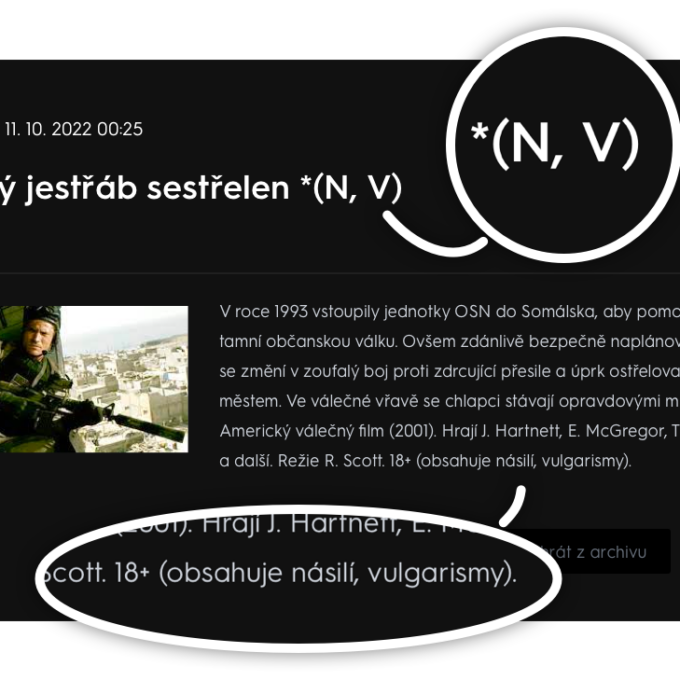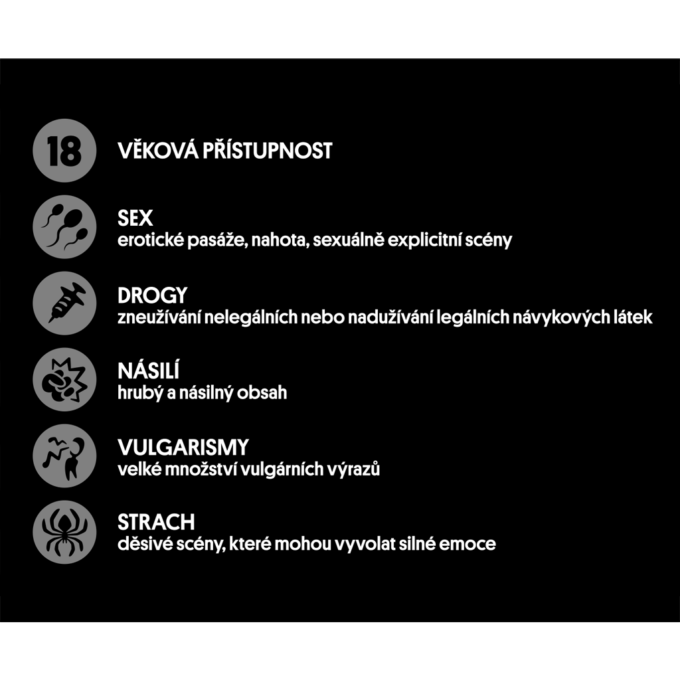What is self-regulation
A self-regulator, or a self-regulatory body, is an institution established under the legal regulations of the Czech Republic (Act No. 231/2001 Coll.). Its mission is to ensure that broadcasters, providers of on-demand audiovisual media services, related services, and platforms refine their offerings in a way that supports continued growth, while adhering to the rules set out in the ethical code for implementing self-regulation. Detailed information and examples of self-regulation are available on the website rrtv.gov.cz.
The principle of self-regulation states that broadcasters and providers of on-demand audiovisual media and video-sharing platform services engage in self-regulation for their benefit. To that end, they make a written commitment to abide by the rules set out in the ethical code. Members of the Association of Commercial Television (AKTV) follow the Code of Rules for Programme Labelling.
Any questions, suggestions, or complaints regarding this topic can be submitted via this contact form, sent to the registered office address of AKTV, or submitted through the data mailbox.
Programme labelling
Programme labelling represents a clear system for marking broadcast works, series, and films in terms of the presence of potentially harmful content and the suitability of their viewing based on the viewer’s age category.
Television broadcasters are legally required to label programmes that could harm the physical, psychological, or moral development of minors with the graphic symbol “18+”. This label signals the potential inappropriateness of the content for underage viewers. In addition to the “18+” symbol, simple pictograms are used to guide viewers by providing additional information about the specific type of potentially harmful content.
Commercial television channels approach programme labelling on a self-regulatory basis, drawing inspiration primarily from the Dutch Kijkwijzer model, which is considered the most advanced in Europe.
There are significant cultural differences between territories around the world. For example, in Europe, there is greater tolerance for nudity and less tolerance for graphic violence, whereas in the USA, the standards for nudity are stricter, and they are more lenient with graphic violence. Therefore, programme labelling cannot be directly adopted from distributors. For this reason, a joint project under the auspices of AKTV is being developed by its members to standardise the assessment of programme content. The project includes a unified database to categorise programmes.
The labelling of risky content includes the following categories: pornography, gratuitous graphic violence, violence, fear and horror, alcohol and drugs, sex, and vulgarisms. If the evaluated programme contains elements of pornography or gratuitous graphic violence, it is completely excluded from broadcasting. Depending on the extent and context of other monitored categories of potentially harmful content, the programme is assigned an accessibility label for viewers aged 4, 8, or 15 years. The script editor is responsible for the final classification of the programme.
Examples of labelling potentially harmful content
Programme labelling clarifies and supplements information about the nature of a programme’s potentially harmful content. Simple labels are displayed in two possible forms – either as text or as graphics:
- Following the programme description: „18+ (Fear, Violence, Language, Sex, Drugs)
- Using abbreviations/codes: “*(F, V, L, S, D)” displayed on screen in the EPG (Electronic Programme Guide) next to the programme title
The criterion for scheduling programmes and labelling potential harm is whether the programmes could seriously disrupt minors’ physical, psychological, or moral development. Programmes are labelled through self-regulation, meaning that if a programme could be deemed inappropriate, it will be marked by programming staff with an age rating of 18+, indicating harmful elements, and the programme will be scheduled for broadcast after 10 p.m. The 18+ label is visible on the screen throughout the entire broadcast. Additionally, in the internal programming database of individual broadcasters, numerous programs are available in two broadcast versions. One is intended for airing after 10 p.m., and the other for daytime broadcasting, where potentially harmful scenes are edited.
Example of programme labelling on TV Prima stations.
Example of programme labelling on TV Nova stations.
Pictograms for labelling programmes on TV Óčko.
Labels for the hearing and visually impaired
Similarly to programmes with potentially harmful content, abbreviations for hearing or visually impaired viewers are included in TV broadcasts and programme guides.
CC label: If this label is displayed for a programme, it is possible to enable Closed Captions for the hearing impaired in the television settings.
AD label: Audio Description of the visual content for viewers with visual impairments can be enabled, and the volume can be independently adjusted in the television menu.







